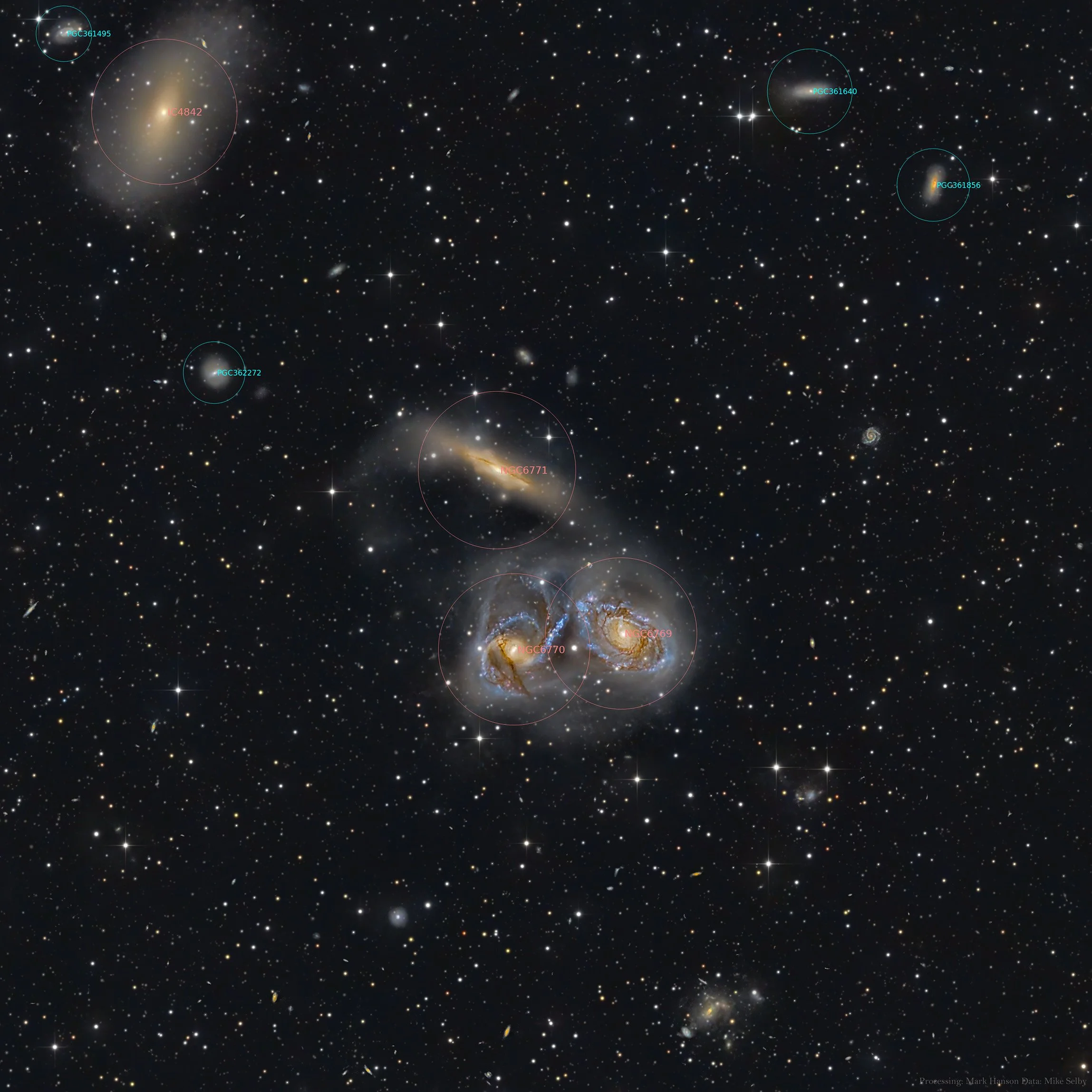NGC 6769-71 interacting tripletin Pavo
Located 190 million miles away
Most galaxies are members of clusters of galaxies. In these, they move around among each other in a mostly slow and graceful ballet. But every now and then, two or more of the members may get too close for comfort – the movements become hectic, sometimes indeed dramatic, as when galaxies end up colliding. This image shows an example of such a cosmic tango.
As dramatic and destructive as this may seem, such an interaction event is also an enrichment, a true baby-star boom. A cosmic catastrophe like this one normally results in the formation of many new stars. This is obvious from the blueish nature of the spiral arms in NGC 6769 (lower right) and NGC 6770 (lower left) and the presence of many sites of star forming regions.
The two upper galaxies, NGC 6769 and NGC 6770 are of equal brightness and size, while NGC 6771 (above) is about half as bright and slightly smaller. All three galaxies possess a central bulge of similar brightness. They consist of elderly, reddish stars and that of NGC 6771 is remarkable for its “rectangular” shape, a rare occurrence among galaxies.
Imaged in LRGB on our PlaneWave CDK 1000 and CDK 700 at Observatorio El Sauce, Chile.
Image Processing: Mark Hanson
Data capture and calibration: Mike Selby
Enjoy,
Mark & Mike
75% Res


